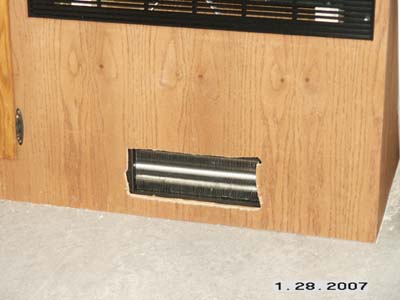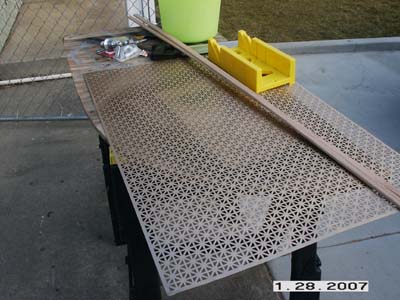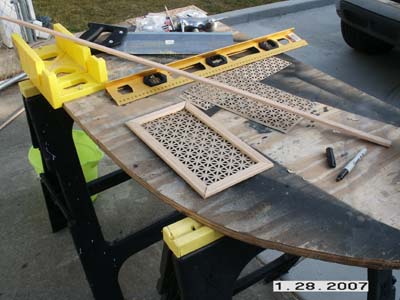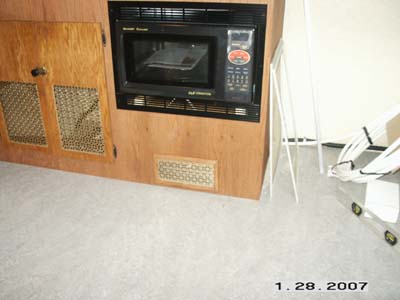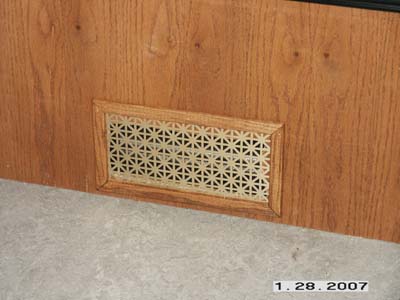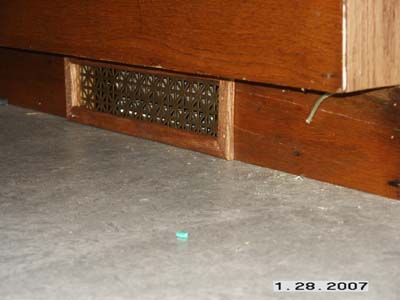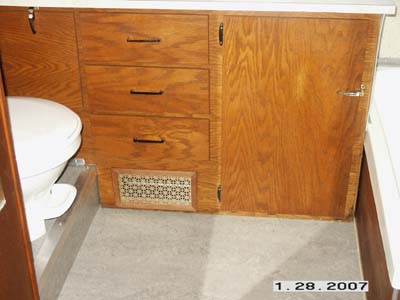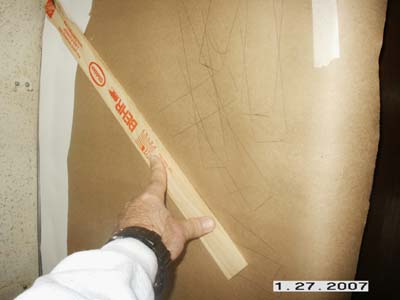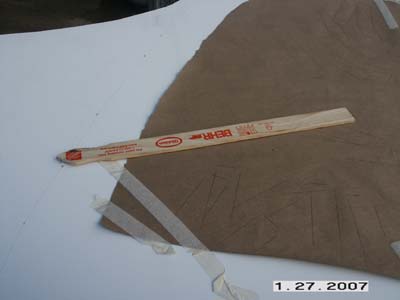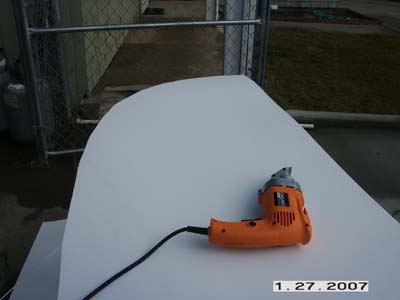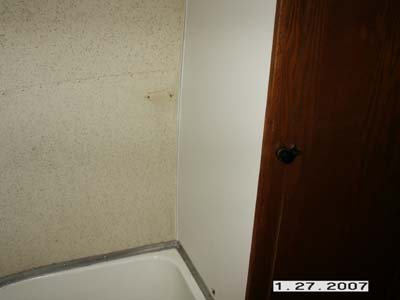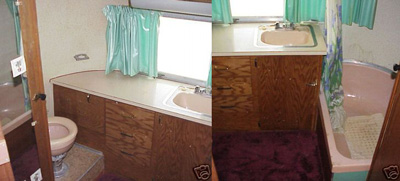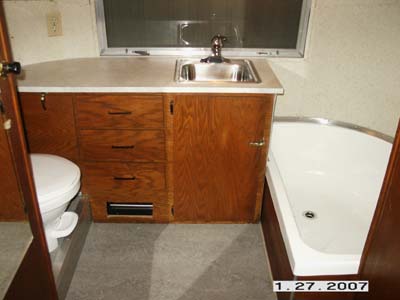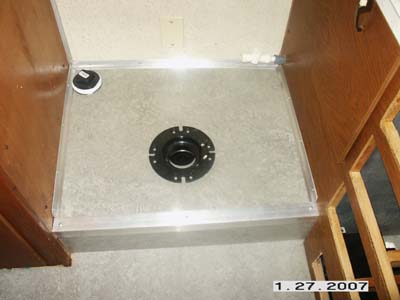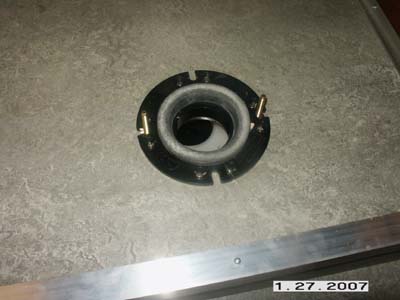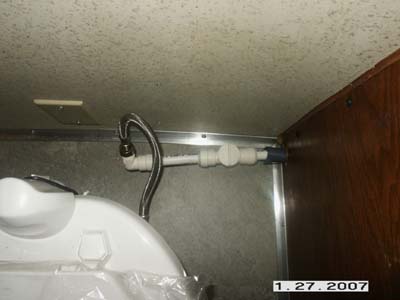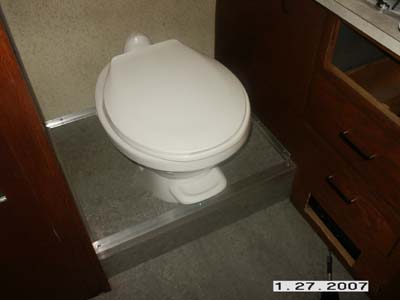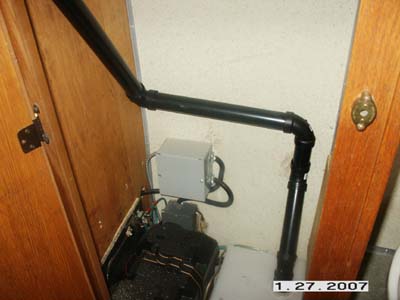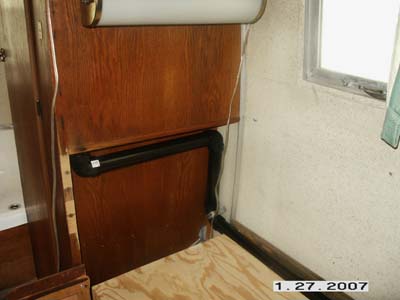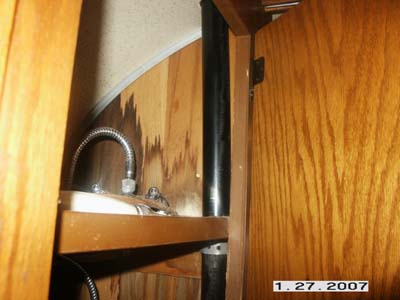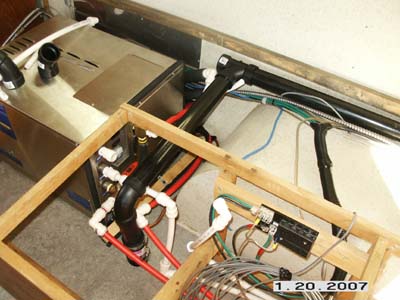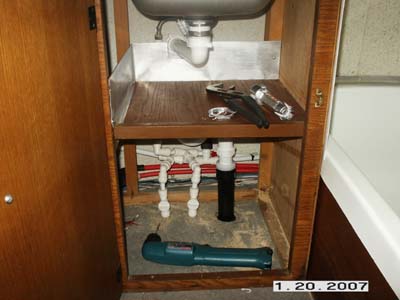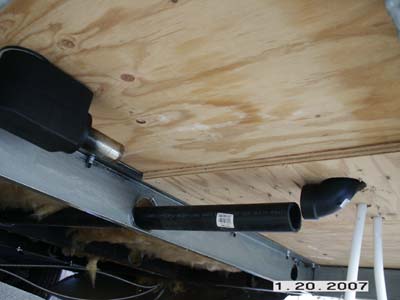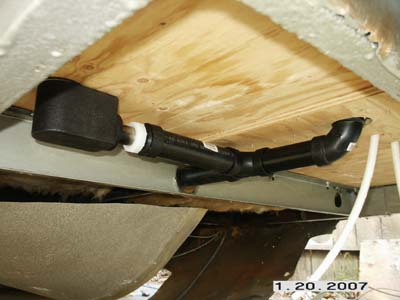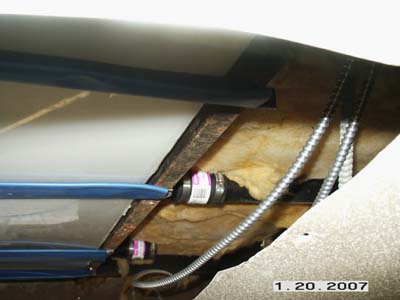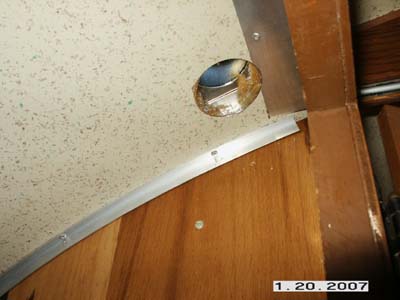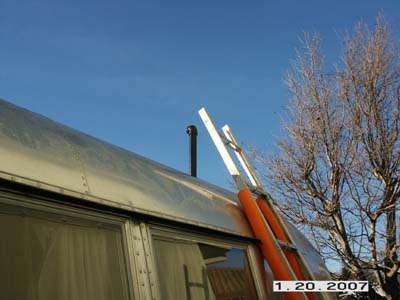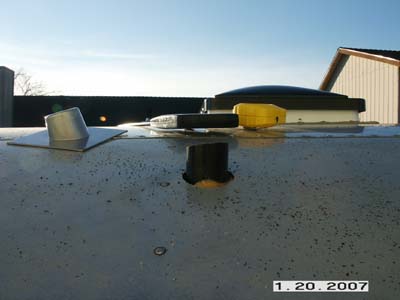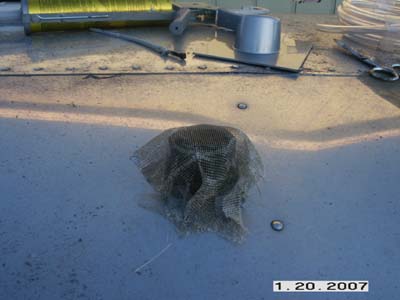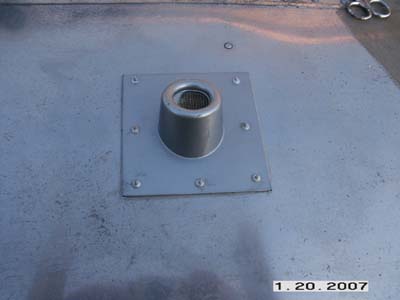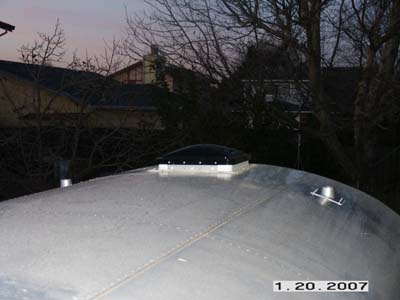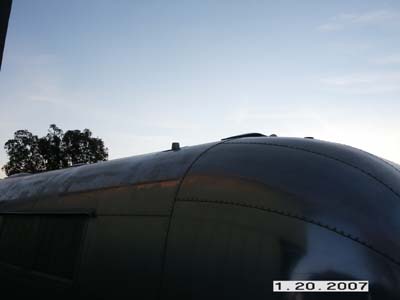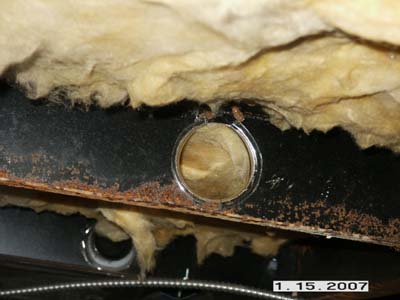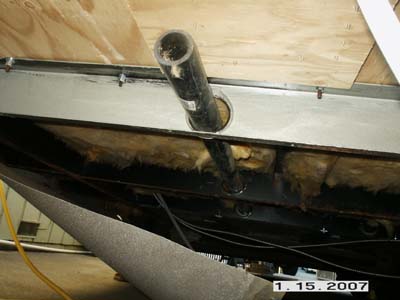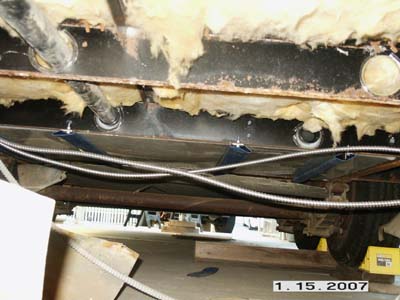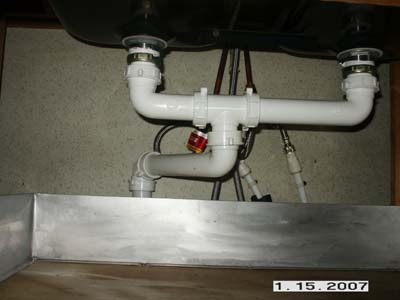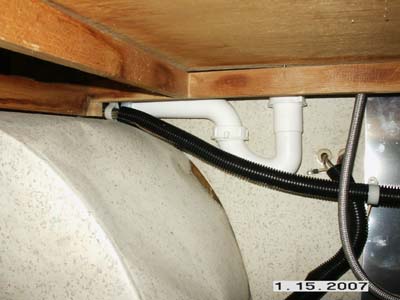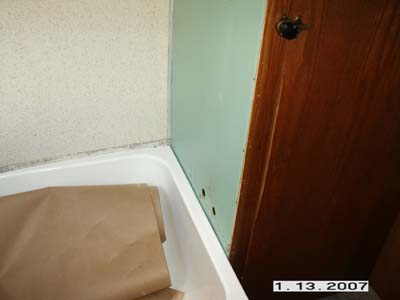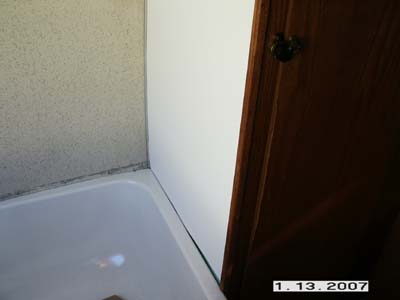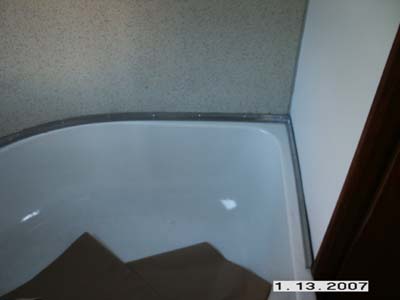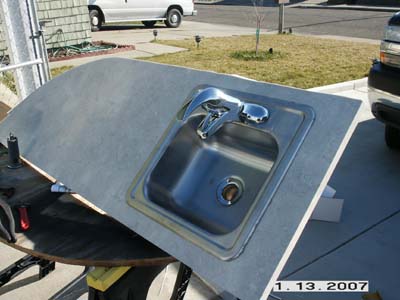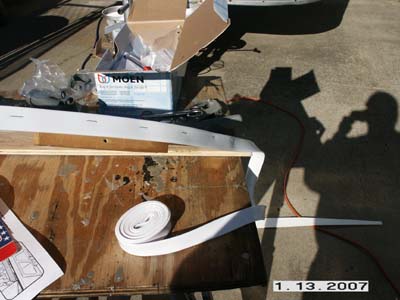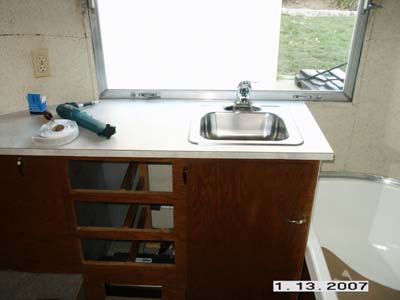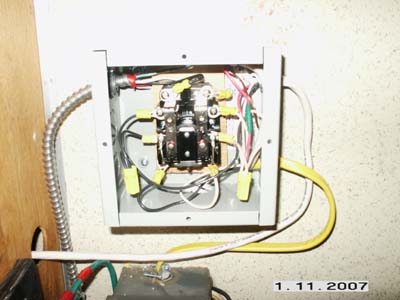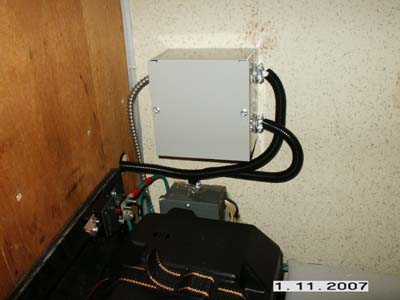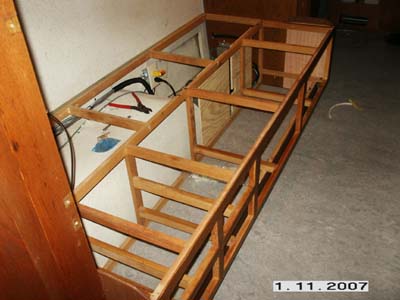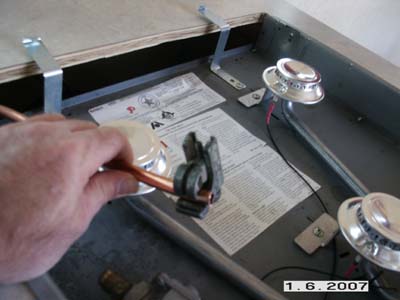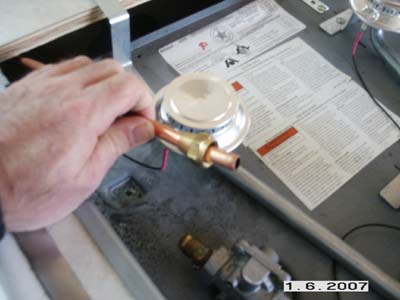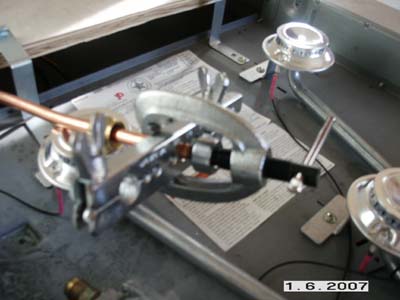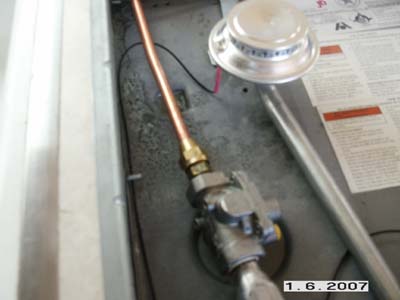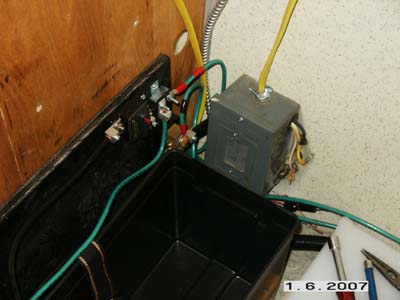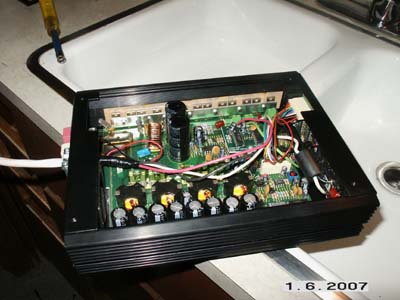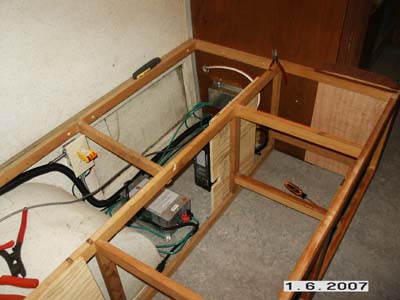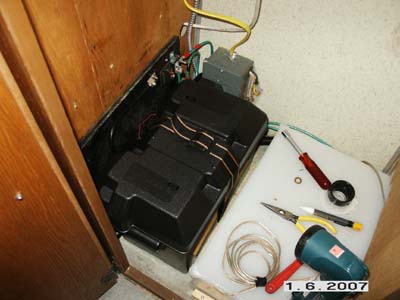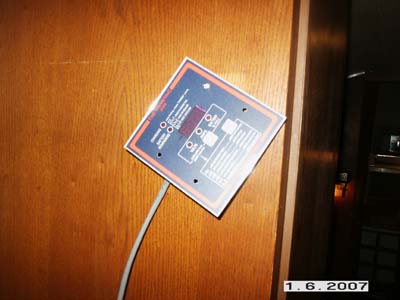Only had a couple of hours today to tie up some loose ends.
You might recall the original 12vdc fuse box in this trailer….
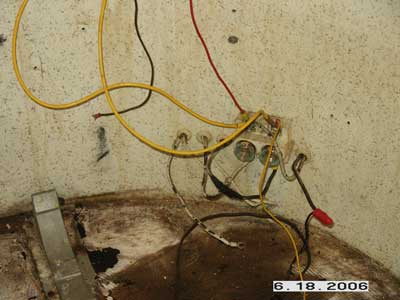
Two 20 amp glass fuses and a bunch of unmarked wires everywhere. What a mess. With some help of my meter, and the guys on the Airstream Forums site, I got all the original wires figured out. This was the final stop for my rewiring plan for the trailer. Tieing the the new with the old.
I had run two #8 wires up front from the street side where I had a junction box that has two #6 wires running back to the battery. This method basically gives me high current access on both sides of the trailer. Since I never had all the interiror walls off to run all new wiring in the walls, I had to tie into the original 12vdc distribution. The original wiring in the trailer runs the 12vdc lighting and the two Fantastic Fans I installed.
So here’s a shot of the new fuse box in place.
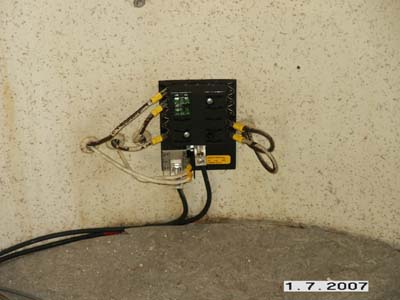
- The two black wires are the #8’s that feed power and ground to the fuse box.Â
- The upper left wire coming out of the fuse box is the tow vehicles charge line, that also runs the future power tounge jack, and the emergentcy breakaway switch.Â
- The second wire down is the feed for the original 12vdc in the trailer for the lights and fans.Â
- The unused wire on the bottom left is the original battery wire from the battery box on the front of the trailer. I just put it on the fuse box until I decide what to do with it.Â
- Likewise the two wires on the right are for the original water pump switch. I just put both on the block for the time being.
Finally I can run the fans again and of course the 12vdc lights. Any new devices that need power such as the TwinTemp Jr., the water pump, the radio, etc. will all come from new wiring from one of the fuse boxes.
I also took the time to check my rewire of the 7-way plug on the front of the trailer. I jumpered wires across to check the running lights, and breaklights since I had worked on all of those items. Nice to report they all check out fine. Same as the charge line I added to the plug because it was not originally on it.
Next I decided I’d like to have the converter off the floor and moved it up next to the inverter. I cleaned up the wiring a little. Still more work needed there.
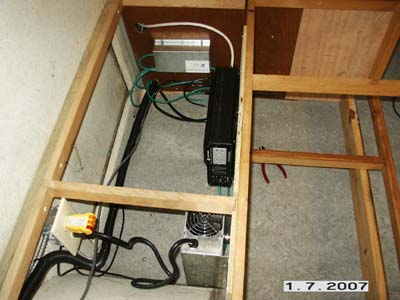
I ended up having to do a semi-suprise window removal and reinstallation. I say semi because I suspected the glass was only held in with the the 47 year old dried up weatherstripping. And I was right. As soon as I removed the old stripping the window fell right out. Of course I caught it! 🙂
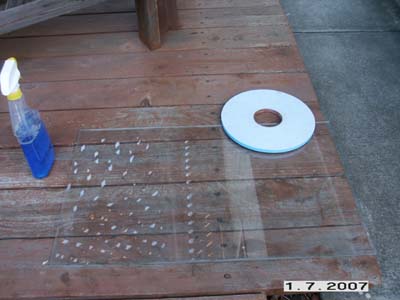
I cleaned up the window and the frame and got my bedding tape ready. I also wiped the window frame edge and the glass edge with alcohol to help adhesion.
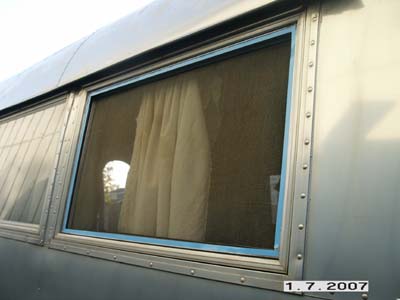
All that’s left is to pop the glass back in and trim it out.
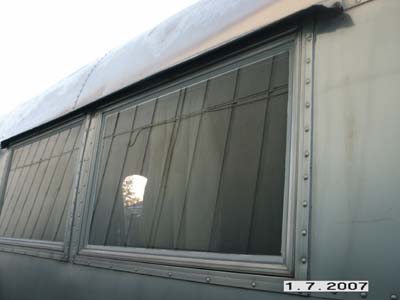
There ya go, another project done. Even if this window never fell out, it would have surely leaked. Now I don’t have to worry about it.
After tying up some more loose ends, it will be off to finishing up the bathroom…..




 by
by 
